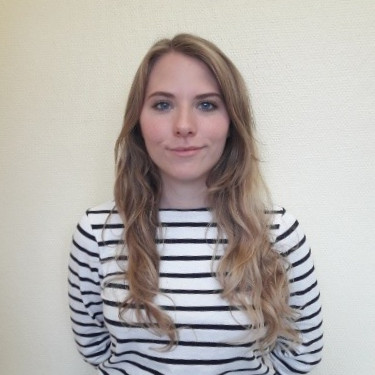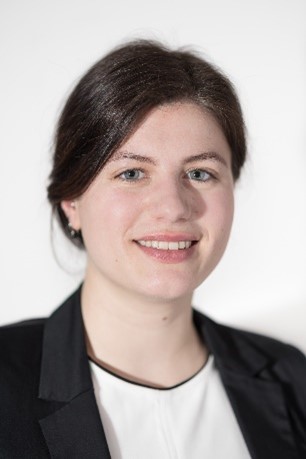Three Marie-Curie postdoctoral Fellowships at ILF
We have received three grants from the prestigious Marie Skłodowska-Curie Postdoctoral Fellowship programme. The postdocs are Laurie Peverini and Nadine Ritter with Professor Stephan Pless and Karl Tobias Gustavsson with Associate Professor Matthias Manfred Herth.

Pharma Communication has asked the three postdocs about their new projects.
Karl Tobias Gustavsson: "Nerve Growth Factor Delivery into the Brain – focus on therapeutic potential in Alzheimer's disease and In Vivo Evaluation via PET"
What is the project aiming at?
The project aims to find ways to deliver nerve growth factor (NGF) into the brain as a potential treatment for Alzheimer's disease. This

Karl Tobias Gustavsson
will involve using new brain delivery technologies and imaging techniques, such as positron emission tomography, to verify that NGF binds to its intended target in the brain.
If successful, the effectiveness of this approach will be tested in a mouse model of Alzheimer's disease.
The project will also explore pre-targeting and click chemistry-based methods for detecting and delivering NGF into the brain. With the guidance of my host, Assoc. Prof Matthias Herth, who is an expert in trans–cyclooctene and tetrzine-based click chemistry and radiochemistry, the project has high probability of succeeding.
Explain and describe what your contribution to the project will be.
My expertise lies in the field of protein production, with a focus on antibodies, protein conjugation chemistry, and in vivo detection of modified antibodies. For this project, I will be responsible for developing and producing NGF constructs that have enhanced brain uptake, as well as assessing their uptake in the brain.
In addition to my technical contributions, I will also be playing a key role in coordinating this project. It involves people from multiple scientific domains, such as chemistry, radiochemistry, and in vivo imaging. All of which are needed for the project to succeed.
Describe the focus of your own previous research.
In my former group, my supervisor assoc. Prof. Dag Sehlin and Prof. Stina Syvänen developed transferrin receptor-based brain delivery systems for enhanced brain uptake of antibodies. My role was to investigate the brain distribution of these antibodies and assess their potential in brain-directed immunotherapy.
Publications
Brain delivery of biologics using a cross-species reactive transferrin receptor 1 VNAR shuttle
Laurie Peverini: “How pathological mutations and drugs alter the intracellular movements of the cardiac sodium channel"
What is the project aiming at?
The project aims at investigating and understanding the molecular motions of Nav1.5 ion channels, which are gated by voltage and allow the passage of sodium through cellular membranes. These channels are expressed in the membrane of

cardiomyocytes, where they play a crucial role in shaping the cardiac action potential.
Several acquired or inherited mutations in their sequence are linked to severe diseases, such as cardiac arrhythmias, but little is known how these mutations affect protein movements. I will use a unique protein engineering technique called tandem protein trans-splicing to express Nav1.5 channels in a living cell with fluorescent molecules attached to intracellular domains.
In combination with an electrophysiological technique called voltage-clamp fluorometry (VCF), this will allow me to simultaneously monitor activity and physical motions of the protein in real time.
This will enable me to determine the molecular mechanisms of Nav1.5 activation and modulation by clinically relevant drugs in both WT channels and those carrying patient mutations.
This precise molecular understanding is of particular importance for designing more potent and selective drugs targeting Nav1.5 channels.
Explain and describe what your contribution to the project will be
In the lab of Stephan Pless, I will first start this postdoctoral project by expressing full-length Nav1.5 channels with the tandem protein trans-splicing technique in order to obtain fluorescent reporters of this channel, through labelling in its intracellular domains. Changes in fluorescent intensity can therefore indicate physical movements of the domains in question. I will then simultaneously record current and fluorescent levels by VCF in these engineered channels. These measurements will be compared with measurements from mutated channels, i.e. engineered channels containing disease-causing mutations or those particularly prevalent in certain populations. Clinically used anti-arrhythmic drugs will also be applied in order to better understand their mechanism of action and to decipher how they differentially affect patients with different genetic backgrounds.
Describe the focus of your own previous research
My previous research has been dedicated to the investigation of molecular motions of ligand gated ion channels with photochemical and fluorescent tools, in combination with electrophysiology. During my PhD with supervisors Thomas Grutter and Alexandre Specht (Strasbourg, France), I have studied molecular mechanisms of P2X receptor function. For this, I have synthesized photoisomerisable compounds that I have incorporated in several areas of P2X receptors. It has allowed us to photocontrol P2X receptor (open and close the channel only with light) and to study the molecular motions of the transmembrane helices involved in the activation and the dilation of these channels. During my following postdoctoral project with Pierre-Jean Corringer (Paris, France), I have studied pentameric ligand gated ion channels. We combined electrophysiological techniques with dynamic molecular simulations (in collaboration with Marco Cecchini and Adrien Cerdan) and were able to probe the pathway of passage of chloride ions in glycine-gated receptors. We have also used the VCF technique to investigate molecular motions involved in the activation pathway of glycine- and serotonin-gated receptors.
Nadine Ritter: “Exploring neuronal functions of NALCN in health and disease”
What is the project aiming at?
The resting membrane potential of a cell is essential for cell cycle control, cell volume, cell proliferation, muscle contraction, wound healing, and neuronal excitability. It is regulated by the activity of ion channels and other membrane proteins. One of the

Nadine Ritter
key ion channels is the sodium leak channel (NALCN). Mutations of this channel lead to neurological disorders in humans, i.e. Infantile Hypotonia with Psychomotor Retardation and characteristic Facies (IHPRF1/2) and Congenital Contractures of the Limbs and Face, Hypotonia, and Developmental Delay (CLIFAHDD).
These mutations result in reduced or increased NALCN activity, respectively. Hence, NALCN is a potential target in the development of therapies against NALCN-related diseases. The overall project goal is to provide insight into the effects of NALCN patient mutations all the way from the atomic level to more complex systems like human neuronal cells.
Together with already available clinical data and preliminary data obtained by the Pless lab, the project will provide the first comprehensive overview over a range of NALCN mutations and their effects on neuronal function.
Further, the project aims to test putative modulators to treat NALCN dysfunctions in stem cell-derived neuronal cells. Together, this will eventually contribute to advancing drug therapies for patients suffering from CLIFAHDD and IHPRF.
Explain and describe what your contribution to the project will be
There are numerous CLIFAHDD and IHPRF mutations that have yet to be investigated for their impact on neuronal function and on neural networks. I will, for the first time, introduce these mutations in human pluripotent stem cells, with subsequent differentiation of the stem cells into neurons. I will then determine the pathophysiological consequences of NALCN dysfunction using electrophysiological recordings, such as multielectrode arrays and patch-clamp.
To further expand our understanding of the patient mutations, I will use computational approaches to characterize and compare WT NALCN and mutant NALCN channels. This will provide an atomic-level complement to the physiological studies in human pluripotent stem cells. Based on preliminary data from the hosting Pless group, I will determine the binding sites of modulatory lead compounds on NALCN. Ultimately, this will contribute towards the development of putative drug candidates.
Describe the focus of your own previous research
The incidence of Alzheimer's disease and dementia are steadily increasing. Current medications are non-selective and can lead to unwanted side effects in patients. A promising therapeutic approach is the targeted inhibition of N-methyl-D-aspartate receptors (NMDARs) in the brain, which play a role in these diseases through overactivation and subsequent nerve cell death. Thus, they are important pharmacological targets and highly selective drug candidates are desirable.
NMDARs occur in different splice isoforms, but it was unclear how they affect receptor function and if they can be targeted in a specific way. I therefore tested how different splice isoforms affect receptor function. Further, I have identified an NMDAR splice isoform-selective and highly potent inhibitor ((R)-OF-NB1) as a possible drug candidate and furthermore deciphered splice isoform-specific inhibition. The inhibitor is already being used in imaging studies with great success in neurodegenerative diseases.
